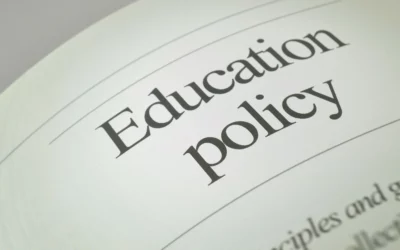
Written by Christine Cooke Fairbanks
October 28, 2022
As anticipated, the Nation’s Report Card released Monday showed staggering declines in test scores – a result of the COVID-19 pandemic policy. While Utah performed better than many states on this measure of academic achievement, the slide backward demonstrates opportunity for improvement.
Peggy Carr, commissioner of the National Center for Educational Statistics, said, “Academic recovery cannot simply be about returning to what was ‘normal’ before the pandemic.”
She is correct. The learning loss for students from pandemic school shutdowns reveals the harmful consequences of an overreliance on a single approach to schooling. The variety of school options for students ought to reflect the pluralistic society we live in, where students have unique learning needs, specific family dynamics, possibly single parents, one- or two-income households, and more.
These realities suggest the need for education pluralism: a policy approach that supports schools as varied as people, values, needs and philosophies that exist in society.
Policies that promote education pluralism include expanding the types of and access to public charter schools, supporting new virtual schools (public or private), helping home-school families access high quality curriculum, and incentivizing a diversity of pedagogical approaches within district public schools. Pluralism accepts as the norm a wide range of education types and then provides for them.
Today’s more uniform approach of educating kids is a tough way to meet needs under normal circumstances, but it makes statewide policy responses (say, a health crisis response in a pandemic) nearly impossible for elected leaders.
For many states during the COVID-19 pandemic, the question boiled down to: Do we keep schools open or close them?
The pushback against either decision was often vitriolic, creating a zero-sum conflict between professional organizations and parents.
What might states’ responses have been if education pluralism had already been the norm?
Data in NAEP scores and other metrics suggests some good came from alternative options.
The recent NAEP scores show that Catholic private schools were the exception to the nation’s backward slide during the pandemic, holding their test scores steady in three out of four tests.
While public charter schools generally seemed to perform similarly to their district counterparts on NAEP exams, we know that some leading public charter networks were able to more quickly decide and efficiently move toward a remote approach. Furthermore, district public school teachers were more likely to report that they lacked resources and support during the pandemic than public charter or private school teachers.
Home-schoolers are not included in the NAEP scores. But anecdotally, those who were supported by state funding to move toward a home-schooling environment (through education savings accounts) reported having a more positive experience during the pandemic. Even more telling is the fact that even after schools reopened, there remained an uptick in home-schooling families and students choosing virtual learning.
We can assume those families wound up preferring these modes as a better approach for their student, which is exactly the point: All students and families are different. When given the opportunity, they will choose the approach that works best for them so long as pluralism in education exists.
These shifts were reflected in state legislatures nationwide. In 2021, 18 states either created or expanded school choice programs, dubbing it the year of education choice. Parents saw what wasn’t working, gained interest in new options, and believed the state should fund them.
Parents across the country have asked for an environment of options. This points us in the direction of education pluralism for educators, parents and students. Policymakers would be wise to follow parents’ lead.
More Insights
Read More
Education policy to consider during the 2024 election season
Here’s a look at what each presidential candidate is likely to focus on in education, given their track records and campaign platforms.
Ignoring the text of the Constitution is a mistake
A written Constitution is entirely superfluous if the document is simply meant to give the people what they want.
What you need to know about election integrity
It should be easy to vote and hard to cheat. This oft-quoted phrase has been articulated as a guiding principle by many elected officials wading into voting and election policy debates in recent years. So why has this issue been so contentious, and what’s the solution?


